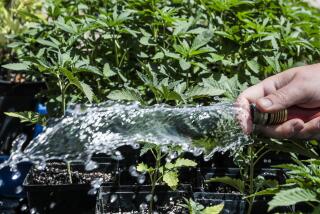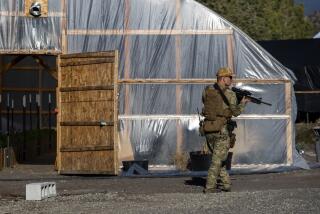Opinion: How legalizing marijuana on Indian reservations could end the prohibition on pot
This week, the Department of Justice announced that it would let Native American tribes grow or sell marijuana on their reservations, even in states where the drug is still illegal. The decision opens the door to pockets of legal marijuana throughout the country, in addition to the growing number of states that have legalized pot or are considering doing so.
There are more than 300 reservations in some 30 states. (Here’s a map.) If a good portion of those tribal governments choose to grow and sell marijuana on their land, then large swaths of the country will have access to legal pot.
It becomes harder and harder for the federal government to list marijuana as a Schedule 1 drug -- considered the most addictive and dangerous and as bad as heroin -- if millions of Americans can buy it at the local pot shop or drive to a nearby reservation for their weed.
In some parts of the country it could be easier to legally buy pot than get an abortion. (Oklahoma and North Dakota, for example.)
Of course, the DOJ’s announcement is logical. The feds have already indicated they’ll respect state decisions to legalize recreational marijuana use and sales as long as they follow eight guidelines, including preventing distribution to minors or ensuring revenue from sales does not go to gangs or cartels. Indian lands are sovereign nations and should get equal or more deferential treatment than the states.
Still, it will be interesting to watch how the cultural and legal shift on marijuana continues to unfold, and how the federal government responds.
For more opinions, follow me @kerrycavan
More to Read
Start your day right
Sign up for Essential California for news, features and recommendations from the L.A. Times and beyond in your inbox six days a week.
You may occasionally receive promotional content from the Los Angeles Times.






